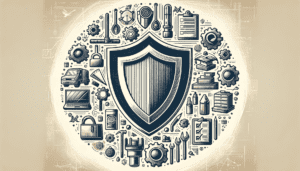Ever Wonder How Fast You Can ‘Fill Up’ Your EV? It’s Complicated

From the July/August 2023 issue of Car and Driver.
EV makers throw around all kinds of numbers regarding charging times, but they don’t tell you much about how long it will take to juice up your battery. Two main factors contribute to the speed at which a vehicle charges from an AC power source: the vehicle’s onboard charger and the power coming to the plug. Knowing how they relate is important if you’re considering purchasing an electric car.
Despite the common practice of calling the J1772 plug a charger, it isn’t. The charger that converts AC power from the grid to DC for a battery is on the vehicle. If a car has an onboard charger capable of 7.4 kilowatts, as the Jaguar I-Pace did at launch, it will take more than 11.4 hours to charge its 84.7-kWh battery from zero to 100 percent (84.7 divided by 7.4).
SAE International conveniently categorizes AC charging into two levels. Level 1 is 120 volts, up to 16 amps (a 20-amp circuit). This means a maximum charge rate of 1.9 kilowatts, which is equivalent to pouring less than a cup of gasoline into the tank every hour. Not exactly practical. If you think you can get by with that trickle, think again and stick with internal combustion.
Illustration by Chloe Zola|Car and Driver
Know Your Charging Limits
Level 2 charging is up to 240 volts and 80 amps (a 100-amp circuit), allowing for a max charge rate of 19.2 kilowatts. Not many cars can take that much AC power. The Porsche Taycan and the early Tesla Model S are two that can. While 19.2-kW connections are available, they aren’t practical for most homeowners because a 100-amp circuit often requires running another line to the house, a costly endeavor. And if you have an EV with a battery larger than, say, 100.0 kilowatt-hours, odds are that a 50-amp circuit delivering 9.6 kilowatts will cover most of your day-to-day needs when you plug in overnight or for 10 hours.
But not all Level 2 connections are equal. The lowest L2 is a 5.0-kW feed, resulting in nearly double the charge time of a 9.6-kW hookup.
Whatever you do, don’t plan to rely on DC fast-charging for everyday fills. First, it’s not cheap. Electrify America charges $0.48 plus tax per kilowatt-hour in most states. From an energy perspective, that’s like paying $16.18 per gallon of gasoline. Hooking up to the DC network can pump a lot of energy into the car over a short amount of time. Cars have DC limits too, so if your Chevy Bolt can only inhale 55 kilowatts, don’t bogart the 350-kW charger when there is a 100- or 150-kW one open.
Assuming you can maximize the onboard charger, the time it takes to charge is essentially arithmetic: usable battery capacity divided by the onboard charger, then tack on at least 10 percent to be safe for charging losses and variable ambient conditions. A little math that may save you buyer’s remorse.

Executive Editor
K.C. Colwell is Car and Driver’s executive editor, who covers new cars and technology with a keen eye for automotive nonsense and with what he considers to be great car sense, which is a humblebrag. On his first day at C/D in 2004, he was given the keys to a Porsche 911 by someone who didn’t even know if he had a driver’s license. He also is one of the drivers who set fast laps at C/D’s annual Lightning Lap track test.




